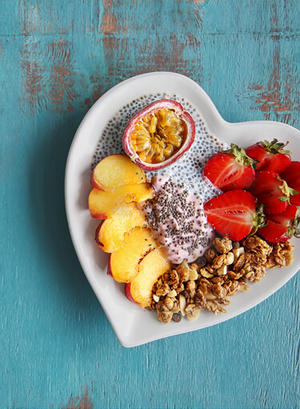- My Ramadan
- Recipes
- Nutrition And Health
-
Brands
- Aero
- COFFEE-MATE®
- CRUNCH® CEREALS
- Cocoa Puffs®
- Fitness Toasties
- illuma 3
- KLIM®
- MAGGI®
- NAN® 3
- NESCAFÉ®
- NESQUIK®
- Nestle® CERELAC®
- Nestle® Pure Life®
- NIDO® PLUS
- PROGRESS KIDS GOLD
- SMARTIES®
- COUNTRY CORN FLAKES®
- CHOCAPIC®
- COOKIE CRISP®
- HONEY CHEERIOS®
- KITKAT®
- LION® CEREAL
- NESCAFÉ® Dolce Gusto®
- NESQUIK® CEREALS
- Nestle® FITNESS®
- NESTLÉ® DESSERT SOLUTIONS
- NIDO® FORTIFIED
- PROMISE PE GOLD
- Perrier®
The key to keeping frozen food fresh
It helps you store almost all the food you buy, keeps it fresh and ensures that you have a healthy nutritious meal every day. And although you may think refrigerators help you do that today, the fact is that freezing, one of the oldest methods of preserving food, can keep food fresh and nutritious for a longer period of time.
To be accurate, good frozen storage usually requires temperatures of -18 degrees Celsius. This is the temperature at which properly packaged foods can be preserved for months. For high-quality frozen foods, start out with high-quality fresh foods. This is because freezing can retain quality, but not improve it.
Before freezing, most vegetables require a simple process called blanching. This involves:
1. Cleaning and cutting the vegetables
2. Placing them in a wire basket
3. Boiling water in a large pot
4. Immersing the basket in boiling water
5. Keeping for 5 minutes
6. Removing the vegetables and immediately putting them in ice-cold water
7. Chilling vegetables until completely cold, then draining, packing and freezing
Tips on freezing different foods:
Different foods require different processes of freezing. From vegetables to fruit and meats, here is how you can store it all to make sure it stays fresh until you decide to use it.
| Type of Food | Method of Freezing |
| Vegetables & Beans | Most fresh vegetables can be frozen. Freeze vegetables quickly and carefully the same day you buy them. Wash, clean, cut, blanch and freeze. Freezing tomatoes can be very practical for use in cooked dishes and sauces. Tip: Do not freeze deep fried vegetables, cucumbers, lettuce or radishes because they lose their crispiness. |
| Fruits | You can freeze fruits with or without sugar syrup. Pick firm and ripe fruits. Wash carefully to avoid bruising. Cut and pack in small serving portions stored in rigid containers and freeze. Tip: Do not store fruits for a long time as their texture might change. |
| Fish | Clean the fish. Package it in the same form you use for use for cooking, using a plastic film by pressing tightly against the surface of the fish. Overwrap with aluminum foil for better protection. Tip: Always package fish in meal-sized portions to avoid thawing unwanted quantities. |
| Meat & chicken | To prevent changes in flavour and drying, wrap all meat products well before you freeze them. You can use heavy-duty foil and special freezer bags that should be sealed tight. Tip: If you plan to store meat for more than 2 weeks, remove the supermarket plastic overwrap and wrap with freezer bags. |
| Baked Goods | You can freeze baked goods in plastic wrap, freezer wrap or foil. Breads maintain their quality for up to 3 months, sponge cakes for 2 months, cookie dough for 6 months and cheesecake for 2 to 3 months. Tip: To thaw, loosen wrap and let sit for 2-3 hours at room temperature. |
Not all foods freeze well. Here are some that don’t:
- Canned foods
- Eggs and mayonnaise
- Delicate fruits and vegetables, such as watermelon, citrus fruits, cucumbers and lettuce
- Sauces and gravies that have been thickened with flour or cornstarch, where separation of layers can take place when frozen
- Yoghurt, milk and cream cheeses
- Well-done pasta may be too soft after reheating. So, if you want to freeze macaroni or dishes containing pasta, then undercook the pasta.
- Spices and herbs
Freezing Tips:
1. Freeze foods as quickly as possible. This helps tiny ice crystals form, which will help reduce damage when thawed.
2. Use all products within a reasonable time. Keep an inventory of food in the freezer to help you.
3. Keep the freezer at -18 degrees Celsius or lower to protect food quality.
4. Do not stack packages to be frozen in your freezer: instead spread them next to each other in one layer and only stack them after they have been frozen solid.




